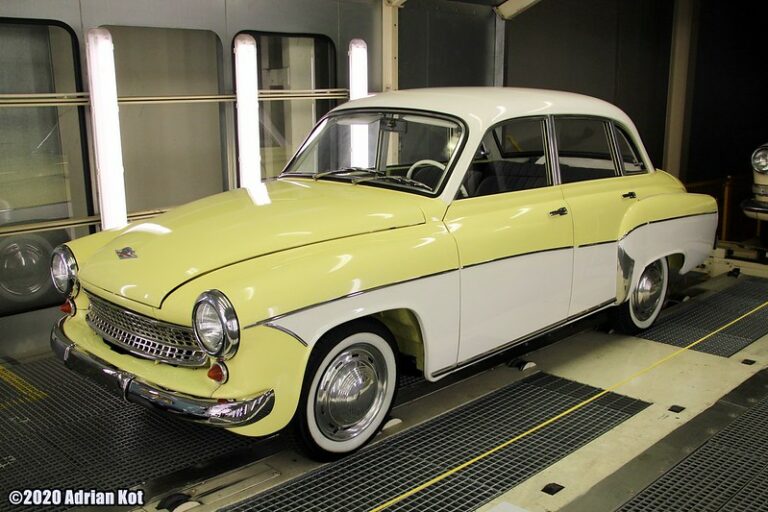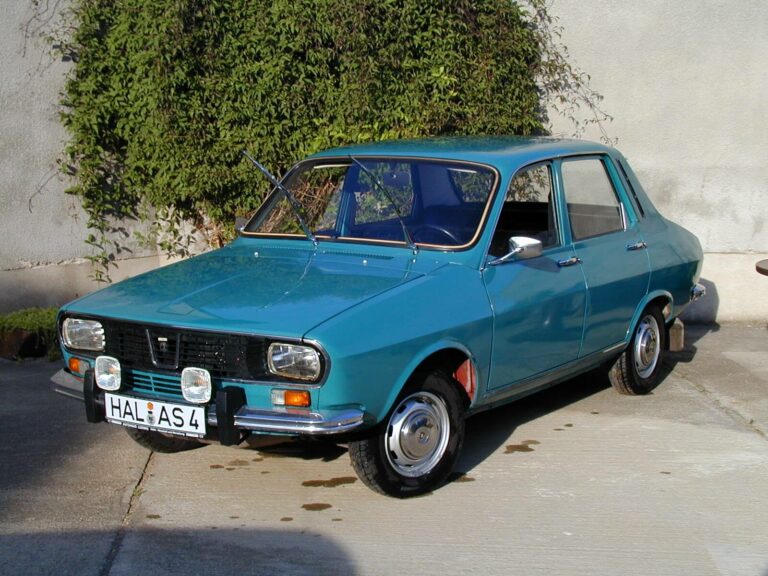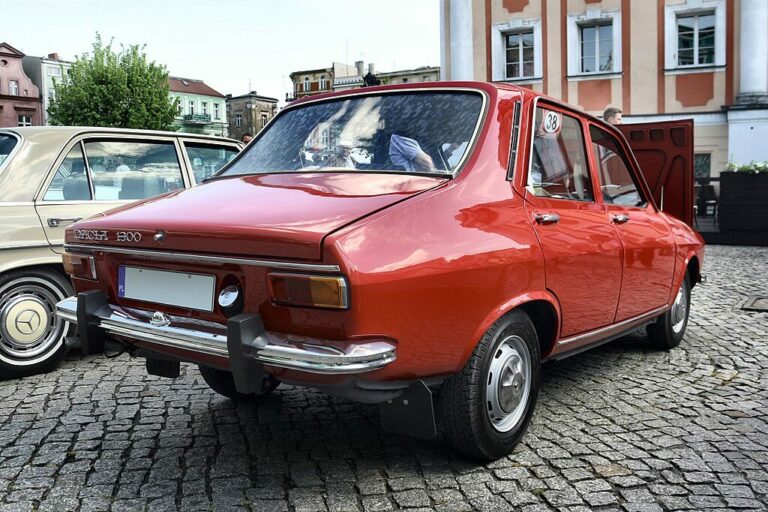1948 - Eastern comfort, Western excitement.
About ZISZ-110
The newspaper "Autó" 1 May 1948.-In the 1948 issue of the newspaper "Auto", the general public could read that, in addition to the great news such as "Budapest is building a world metropolitan underground" or "The International Machine Trade Ltd. has been taken over by Hungarian workers", the general public could also read that "As is known, Generalissimo Stalin presented the leaders of the Hungarian government delegation in Moscow at the time of the conclusion of the Hungarian-Soviet Friendship and Mutual Assistance Treaty with a ZISZ passenger car of excellent quality."
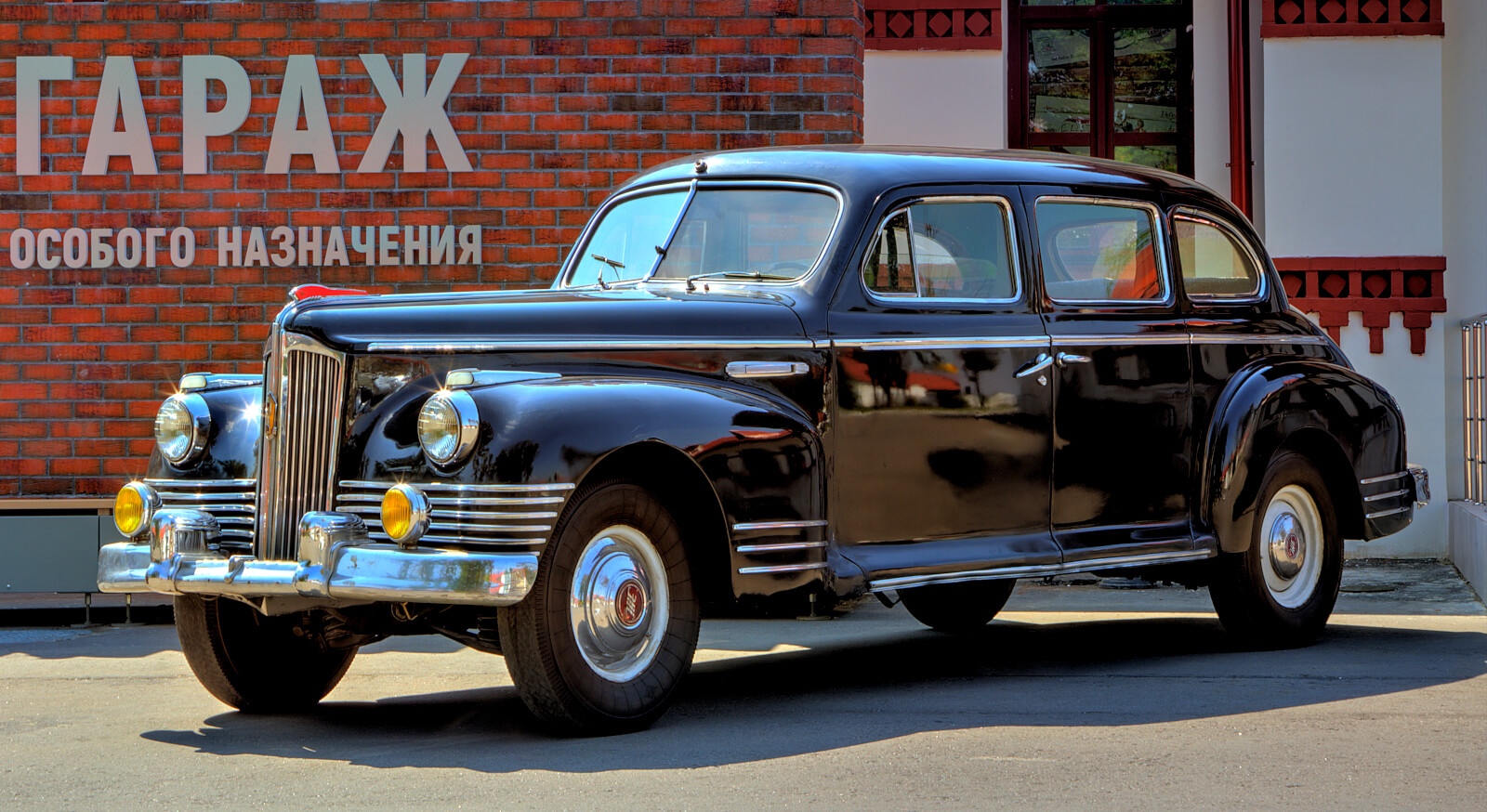
Image source: wikipedia / MGON 2021
Specifically, the ZISZ-110s of the Stalin Automobile Factory in Moscow were the objects of a generous gift from Comrade Stalin. These ZISZ-110s, which at that time were still almost a new development, were introduced in 1945 and were the absolute "crown jewel" of Soviet car production. (Khrushchev then renamed the factory in 1956 after the legendary director Ivan Alexeyevich Likhachev in the name of the anti-personal cult, and from then on the car was produced under the name ZIL.)
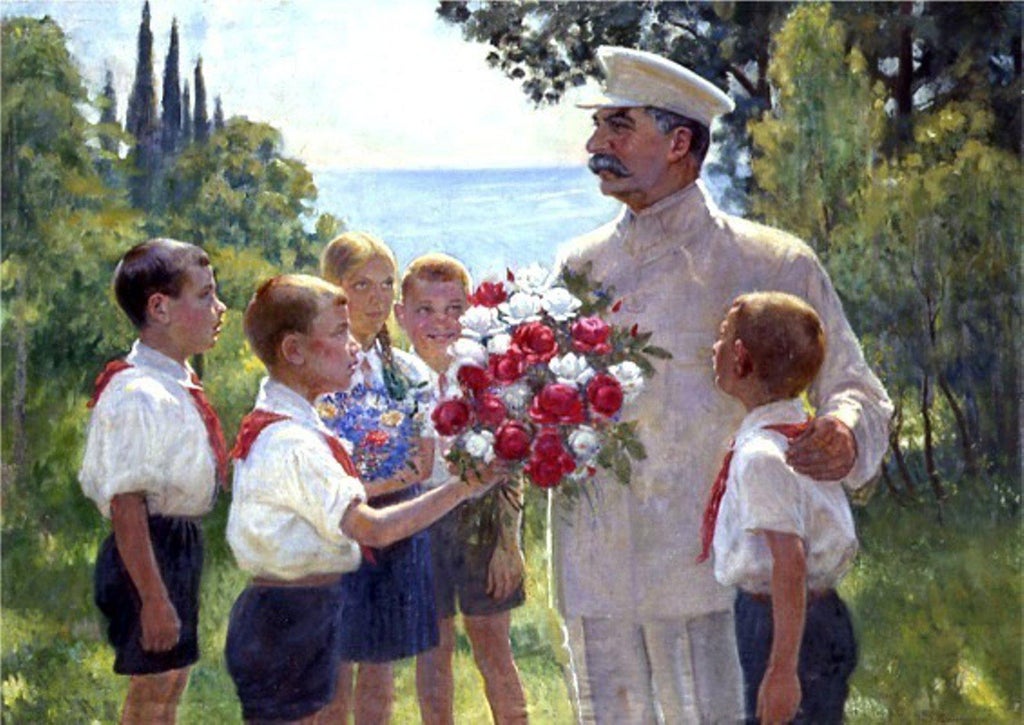
Roses for Stalin - Painting by Boris Vladimirsky from 1949 - source: reddit / r/PropagandaPosters
However, at the time of the Hungarian-Soviet friendship treaty, it was only 1948, and February at that, so the car was considered to be brand new and incredibly luxurious.
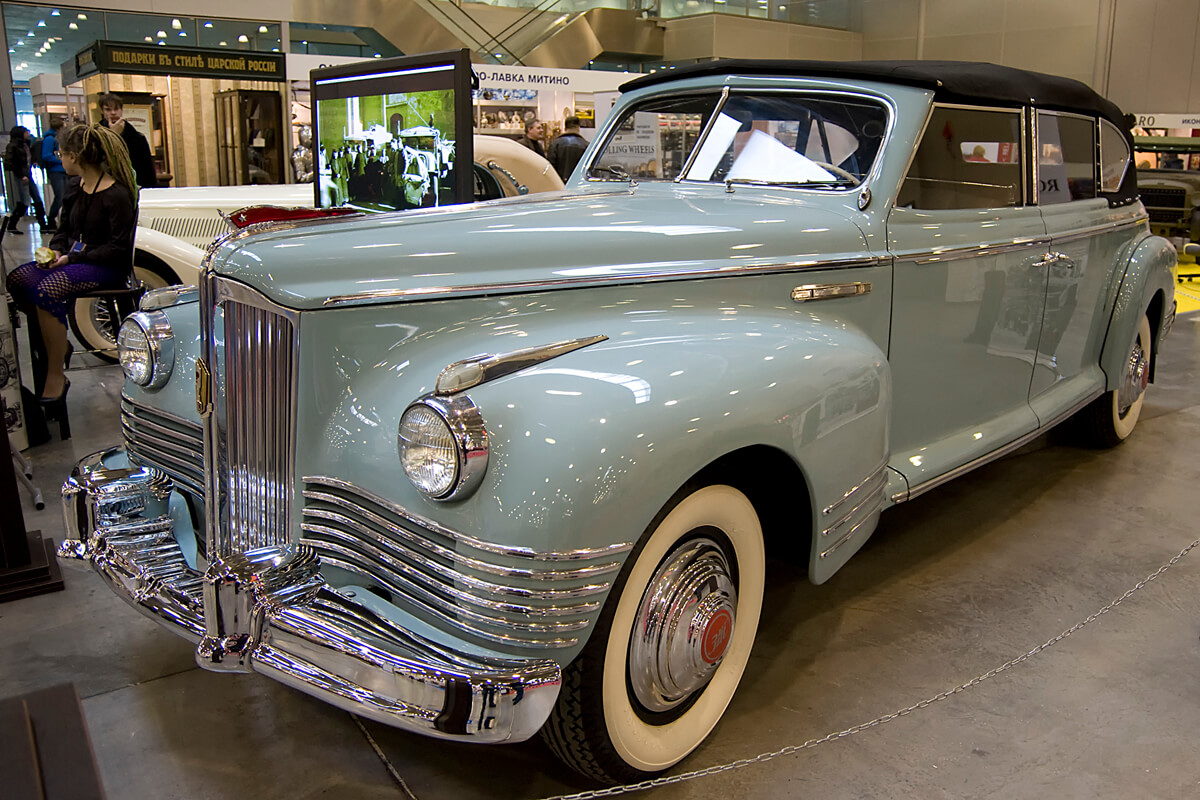
ZISZ-110V - Image source: Wikipedia / Alexander Markin
Europe - and the European car industry - was then only just recovering from the shock of war: a large part of the German car industry had been destroyed or was in the Soviet surveillance zone (see Opel, BMW), FIAT in Italy was still lying in a lousy state, Ford and Morris in England, as a mass car manufacturer, were still standing, but - as it turned out later - the car industry itself was slowly but fatally scarred.
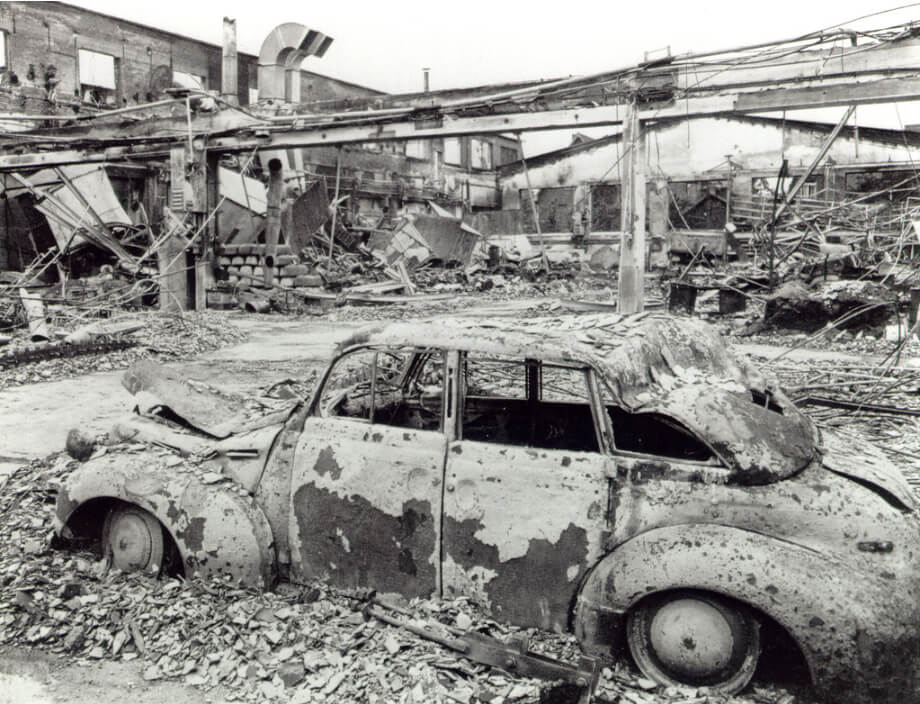
The Opel works in Russelsheim after the bombing of 1944 - Image source: flickr / Five Starr Photos
The first new post-war model on the European continent is the Peugeot 203, which debuted at the time, but the general poverty is well illustrated by the fact that sales are being pulled along by ultra-economical models such as the VW Beetle or Citroen 2CV for some time to come, if ever.
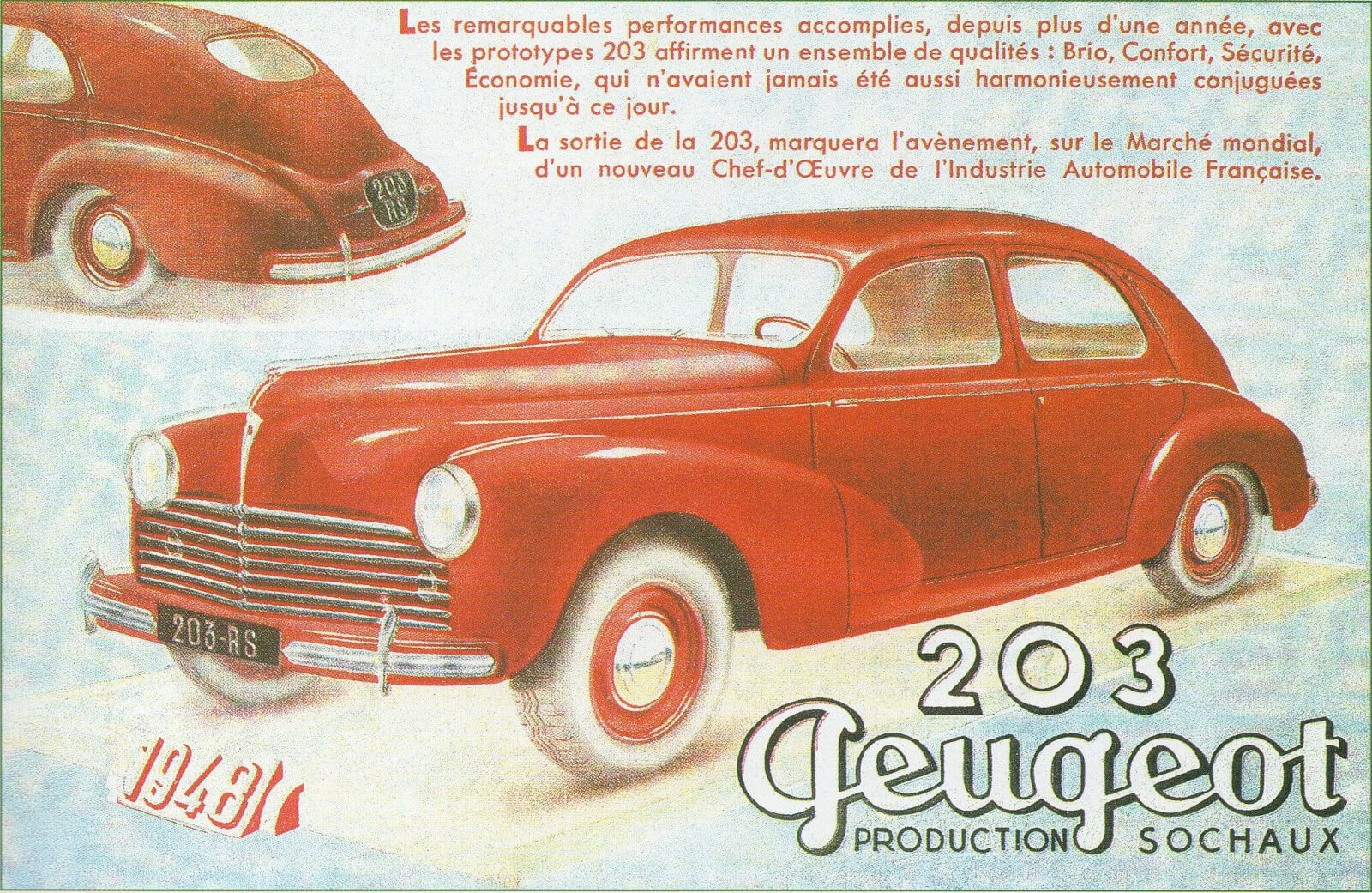
The first new post-war model from 1948, the Peugeot 203 - Image source: flickr / Andrew Bone
But not in the Soviet Union.
In 1943, in the middle of the war, a group of engineers from ZIS (Zavod imeni Stalina), headed by the plant's chief designer Boris Fitterman, who was only 33 years old, set about designing a new executive limousine.
At the start of development, Stalin's personal preferences were based on the then top-of-the-range American luxury limousine, the "Packard Super Eight", although it is true that the car's reproducibility under specific Soviet conditions was also taken into account. All the time, the work was personally supervised by Nikolai Vlasik, Stalin's chief of security.
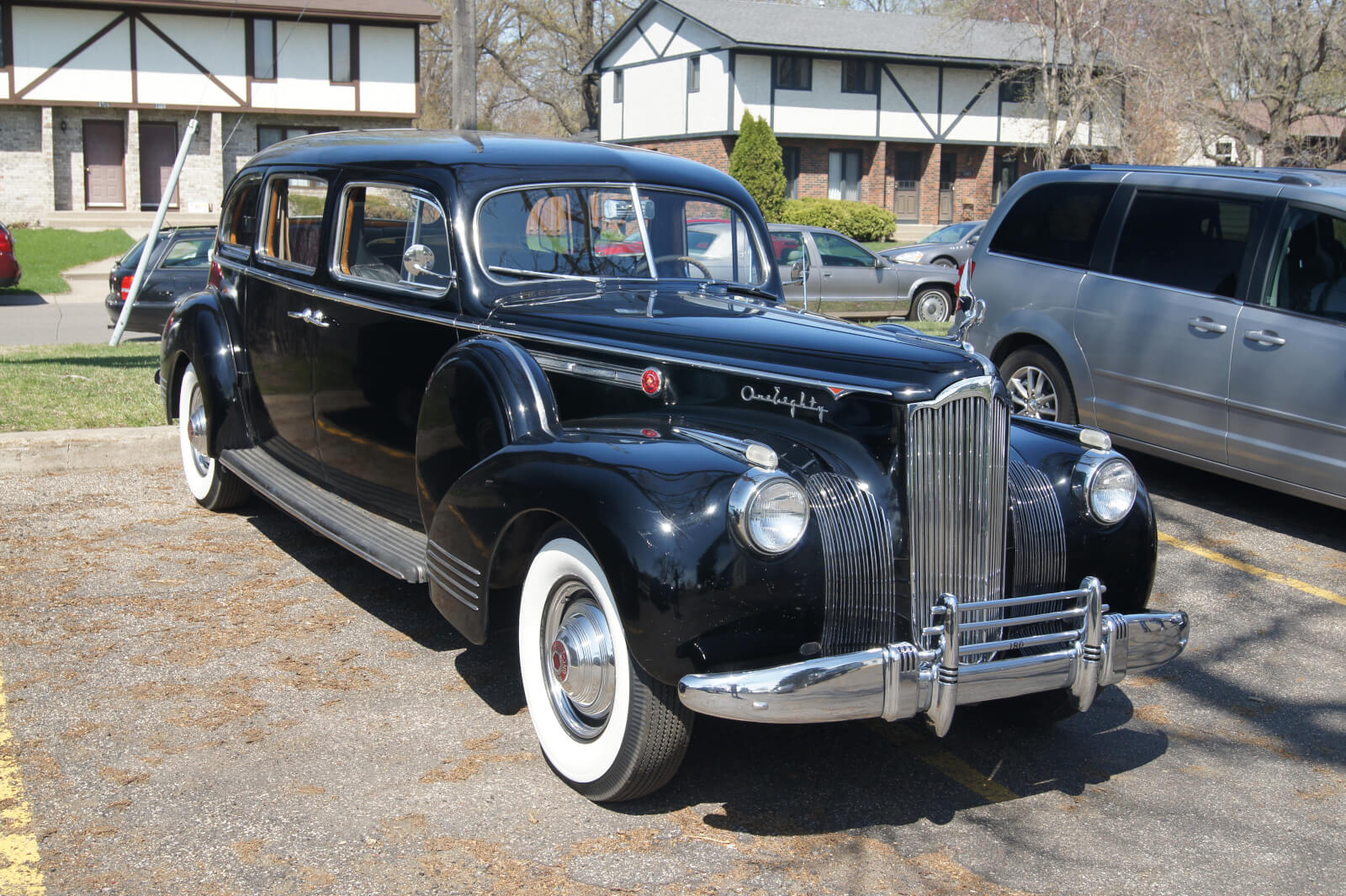
A sample Packard Super 8 One Eighty from 1941 - Image source: metrommp.com
The car was an in-line, 8-cylinder, four-stroke, bottom-valve ZISZ-110, the most powerful Soviet power unit ever made. With a displacement of 6002 cm³, the engine produced 140 hp at 3600 rpm. This power was enough to allow the 2.5-tonne car to shift immediately into third gear from first gear. The operating lever for the three-speed synchronised gearbox is located on the right-hand side of the steering column. The engine was equipped with hydraulic valve lifters and a Morse drive train, which made it so quiet at idle that the designers fitted a warning light on the dashboard to indicate engine operation.
The car had two fuel tanks with a total capacity of 130 litres.
The ZISZ-110 was the first in the Soviet Union to have independent wheel suspension and a closed cooling system.
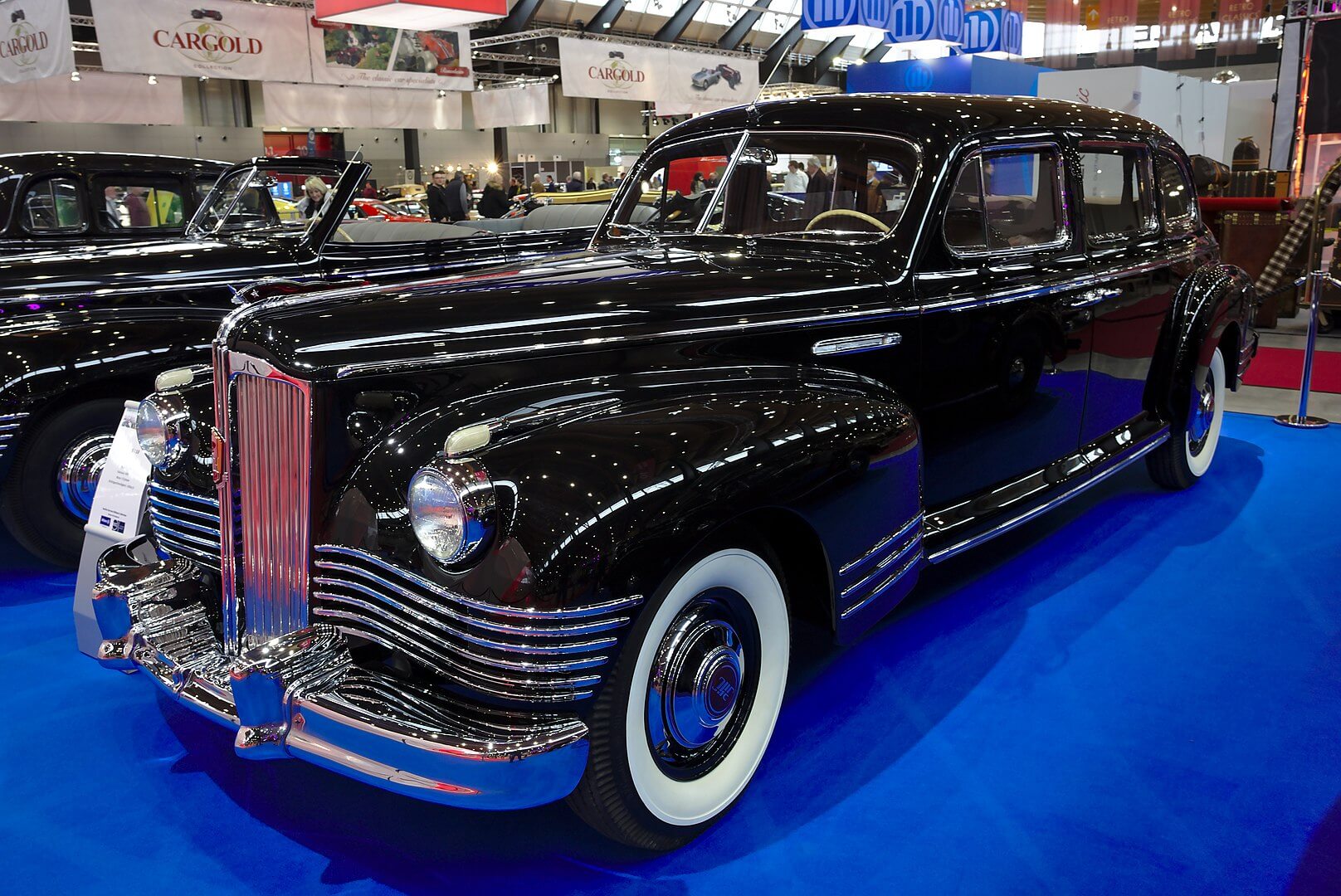
ZISZ-110 -1947 - Image source: wikipédia / Sándor Migl
The car is equipped with a three-speed synchronised gearbox and hydraulic brakes. The electrical system was the then accepted 6-volt, but by default it was possible to install a spare battery and ignition system that could be switched on the fly. Although the traffic regulations of the time allowed only one tail light, the ZISZ's tail was fitted with a separate light and brake light, which also served as a direction indicator, as in the US. Although at that time the index control buttons were typically located on the dashboard of the car, the function was now available by turning the lever on the left side of the steering column. At the front, the traditional headlamps with separate lamps, reflectors and lenses were replaced by headlamps with reflectors, in which the different functions were controlled by changing the brightness of the bulb.
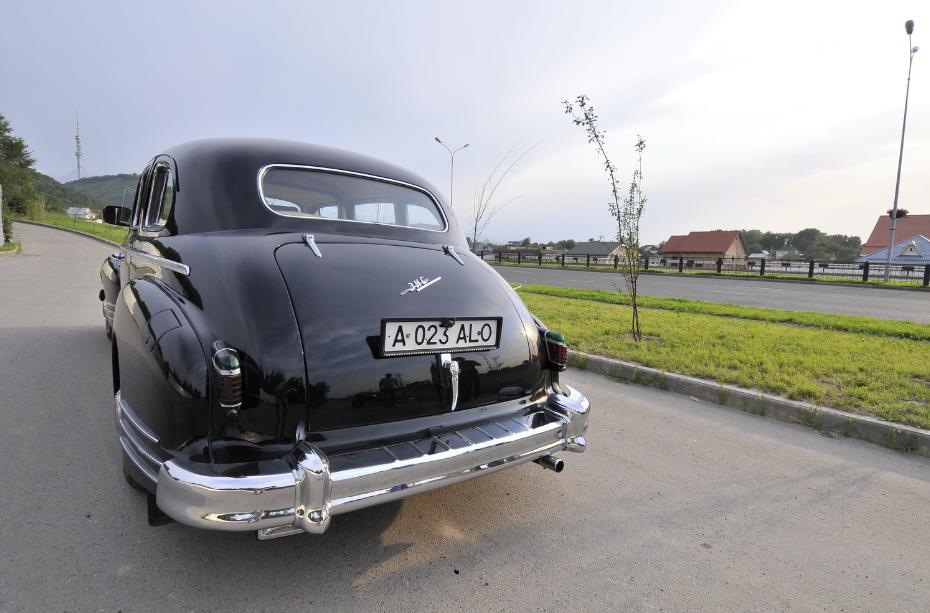
A 1946 example from the back - Image source: kz.all.biz
The dashboard also features a speedometer, fuel gauge, thermometer, ammeter, oil pressure gauge, red direction indicator light, blue high beam headlamp and green ignition indicator light. The speedometer needle had a three-colour backlight; depending on the speed: green up to 60 km/h, yellow from 60 to 120 km/h, and red above 120 km/h, it also informed the driver of the current range. The numbers on the speedometer scale had no last zeroes, i.e. instead of "80", "100", "120", etc., the indicator showed "8", "10", "12". The indicators were identified not by icons but by the name under each one.
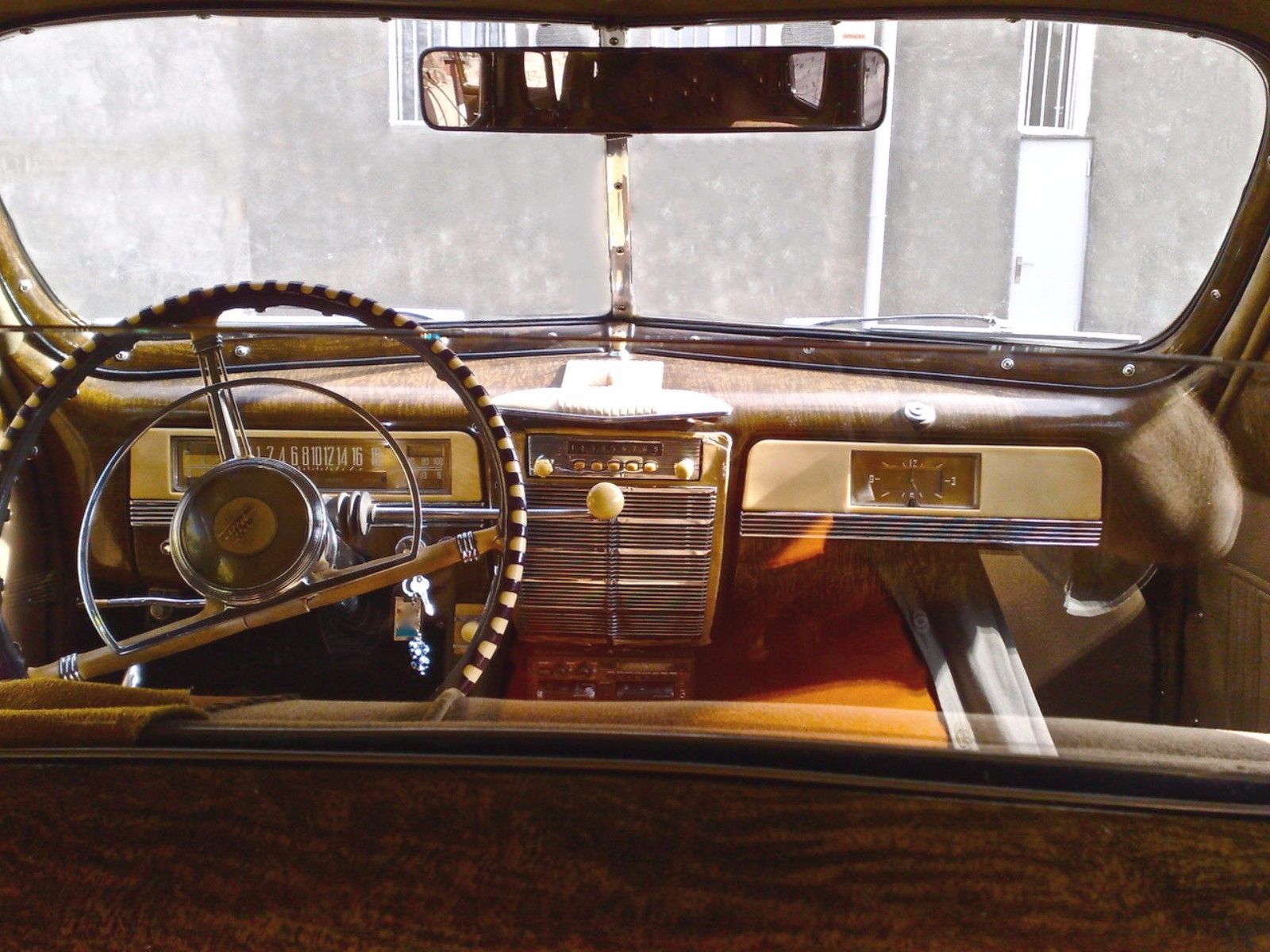
Interior of a 1946 example in front... - Image source: autoevolution.com
The ZISZ-110 was equipped as standard with a radio and hydraulic window lifters; the latter also allowed the glass wall separating the driver and rear seats to be moved. According to some sources, the car was also equipped with air conditioning, the cooling unit being located in the boot and blowing air into the passenger compartment through the rear pillars. The cabin was legendarily comfortable and spacious, although the latter was in no small part at the expense of the front seats, especially on the driver's side.
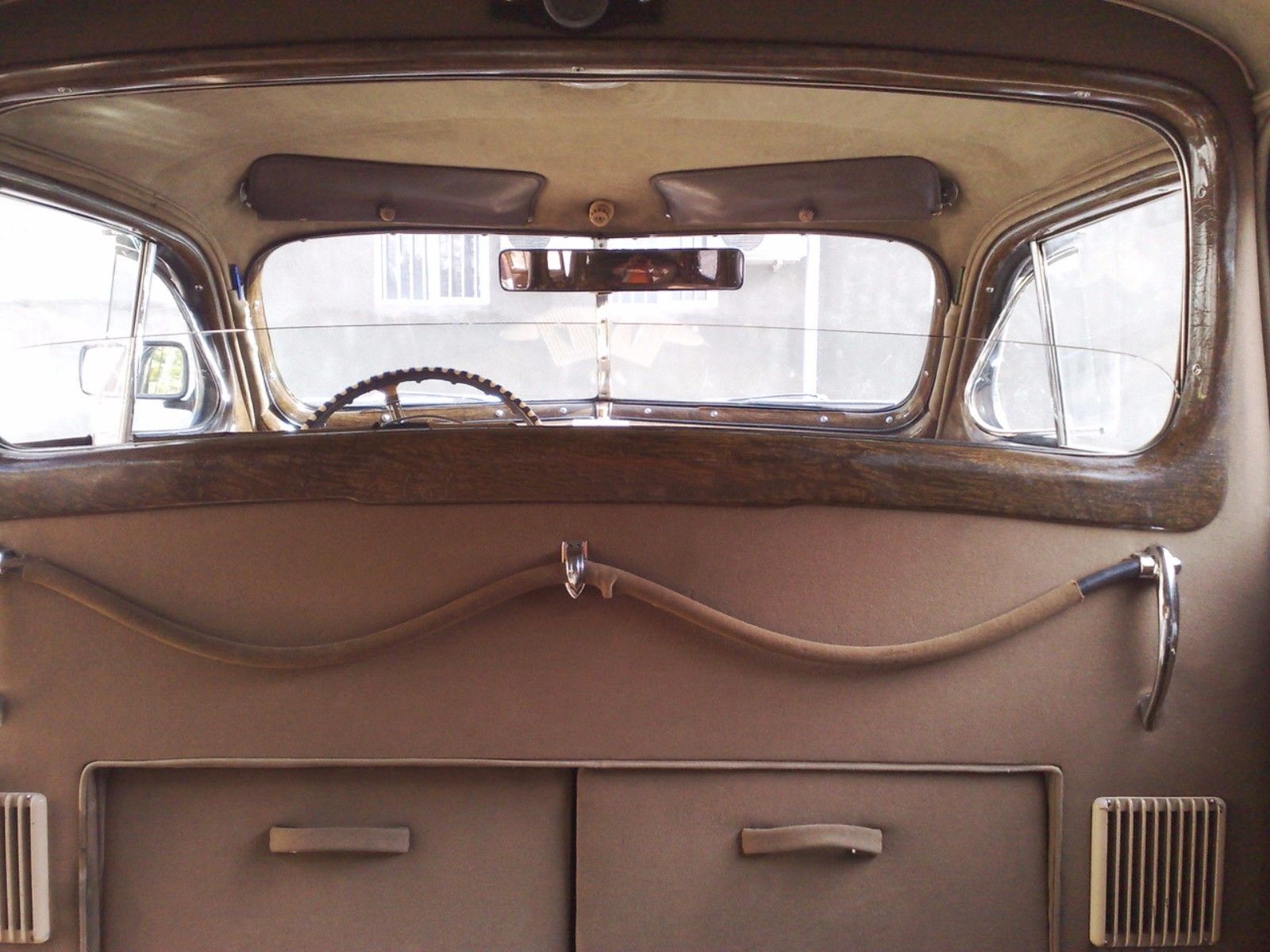
...and rear - Image source: autoevolution.com
The lead designer of the ZISZ-110, Andrei Ostrovtsev, while keeping in mind the emphatic recommendations for the Packard, did not slavishly copy the car, but designed a new car, both inside and out, reminiscent of the Packard. The main body panels, trim and fittings, equipment and interior design are all reminiscent of the American luxury limousine, but not interchangeable. A striking change - and one that is in keeping with the times - is that, unlike the Packard Archaic, where the spare wheel was still housed in a separate body element on the mudguard, the ZISZ now has it in the boot, but also the absence of the 'performers' from the Soviet car, also reminiscent of the 1930s and early 1940s.
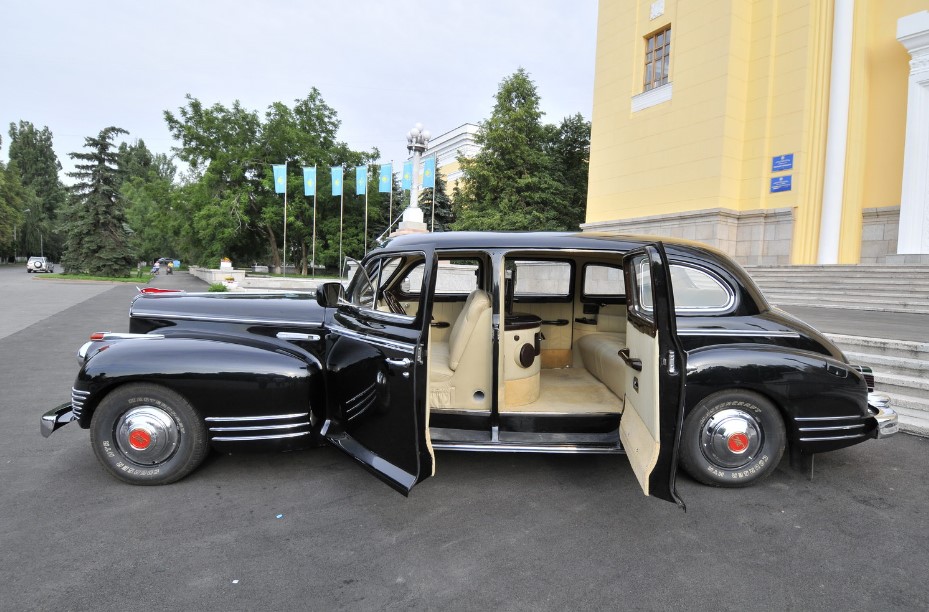
Image source: kz.all.biz
Each car is hand-built, with full documentation of the work process.
In 1945, the year the war ended, a total of 34 cars left the factory, but in the entire sixteen-year production cycle, including the variants, only 2,089 ZISZ-110s were built.
An absolute top-of-the-range model, it was the first post-war car of the Soviet Union. Despite the fact that the car was clearly made to political orders, and its target audience was the political and economic leadership of the Soviet Union and friendly countries, the 110 was, unlike later cars, a market model in the sense that, at least in principle, anyone could buy it; its use was not restricted.
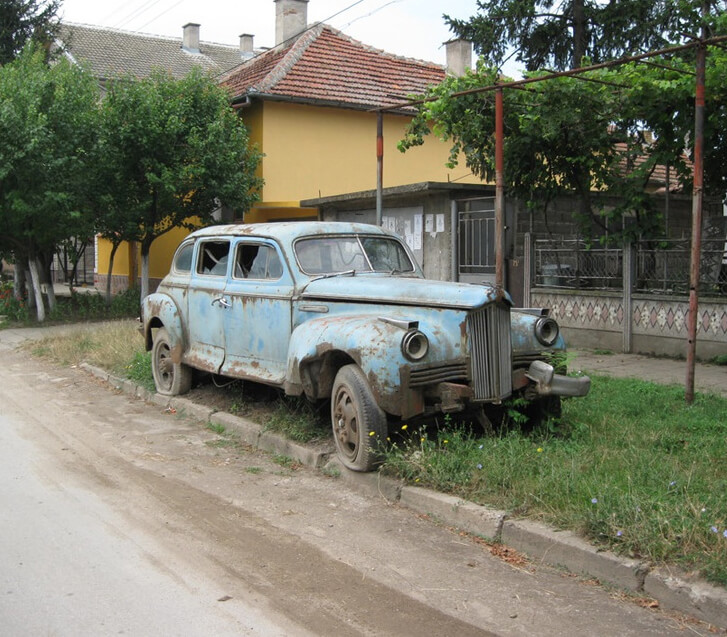
Somewhere in Bulgaria. - Image source: justacarguy.blogspot.com
From 1945, the first cars completed were, of course, allocated to the State and Party apparatus: the Council of Ministers received 39 cars, State Security 15, the Ministry of Foreign Affairs 14, the Party Central Committee 13, the Academy of Sciences 12 and the military staff 5. The Councils of Ministers of the Union Republics received between two and four cars, except for the Council of Ministers of the Ukrainian SSR, which had seven ZISZ-110s at one time. However, ministries and other government bodies such as the Central Committee of the Komsomol, the Prosecutor's Office, the State Bank and Pravda were also allocated cars. In 1945-47 a total of 230 cars were distributed. On a case-by-case basis, deserving individuals such as Igor Kurchatov, one of the fathers of the Soviet atomic bomb, who was awarded a cash prize of 500 000 roubles (the price of 55 Moskviches) and a luxury limousine in recognition of his achievements.
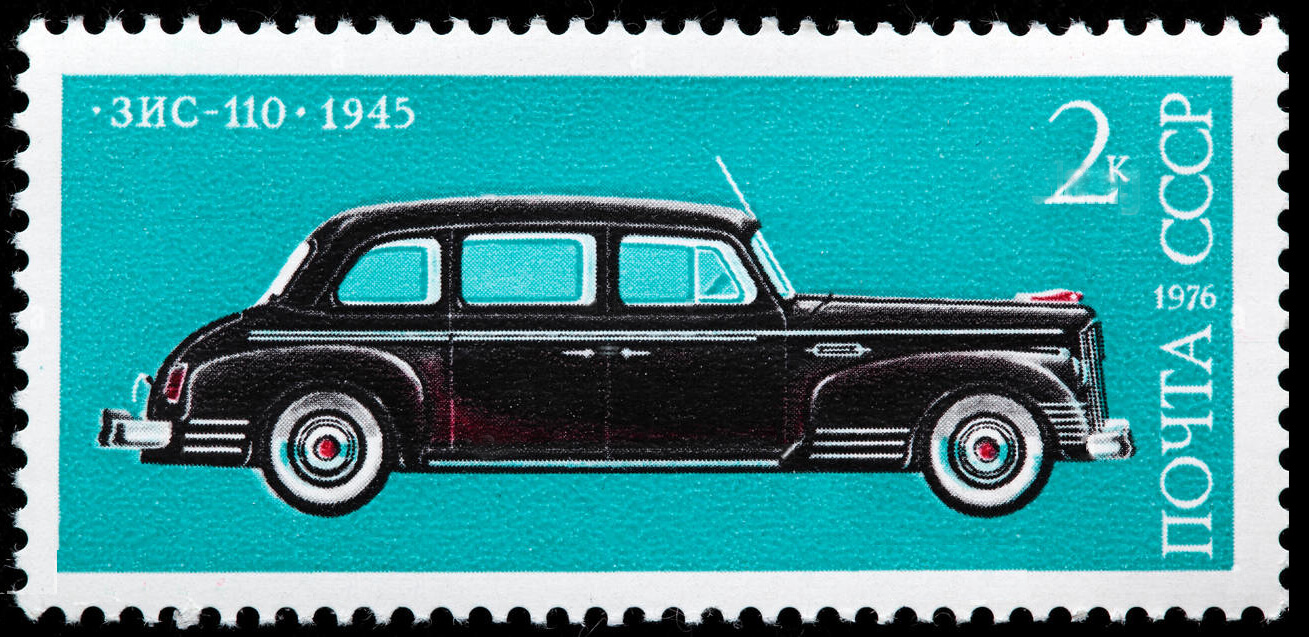
Postage stamp from 1976 - Image source: alamy
The car belonged to Mátyás Rákosi, the 50th example produced, but it was also given to Ferenc Nagy, the prime minister of the small farmers' party, and - as mentioned in the introduction - to the two leaders of the delegation that ratified the Hungarian-Soviet Treaty of Friendship and Mutual Assistance, namely Zoltán Tildy, the president of the republic, and Lajos Dinnyés, the prime minister of the time.
Prime Minister Francis Nagy receives a gift from Stalin in 1946 - filmhiradok online
The ZISZ-110 is painted black, burgundy, blue and dark green, while the ZISZ-110B wood tones (folding fabric versions) are painted black, grey, blue-grey and beige. In addition, there were also some very special versions, such as the 110V convertible and the 110SH all-wheel drive version, which were produced under the name 110A for ambulance use.
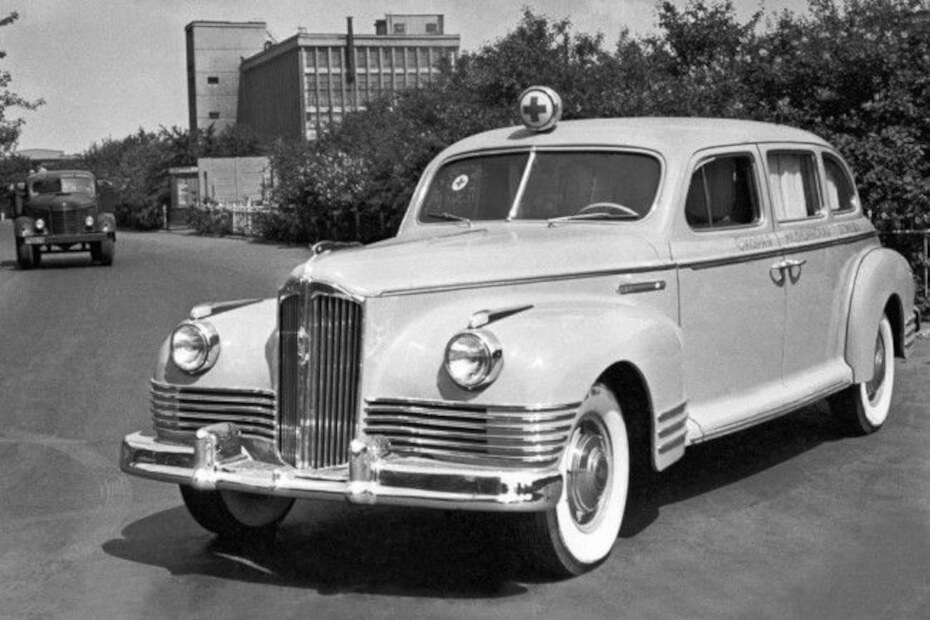
The ambulance version - Image source: pinterest / retromobil.hu
The cars have also appeared as a kind of VIP taxi on the streets of Moscow, but also as a "minibus" on longer distances such as Moscow-Simferopol, Moscow-Vladimir or Moscow-Ryazan.
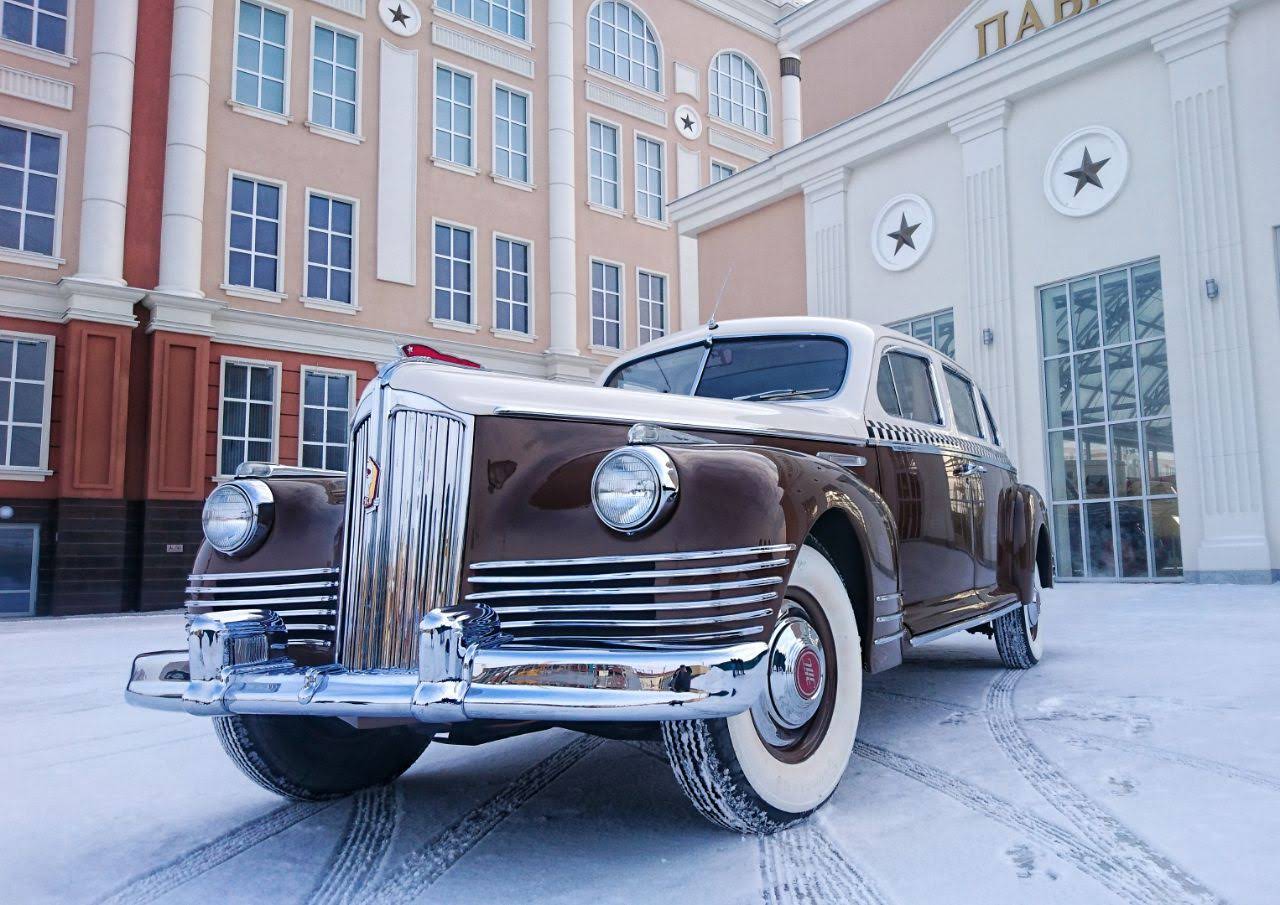
Dressed as a taxi - Image source: wikipédia / УГМК
There was also an armoured version of the car, called ZISZ-115, which was designed and built especially for Stalin. Thirty-two of these cars left the factory in 1948-49, one of which is now part of the collection of the Budapest Transport Museum.
The designers A. N. Ostrovtsev, B. M. Fitterman, L. N. Gusev, A. P. Siegel were awarded the Stalin Prize in June 1946 for the creation of the ZIS-110.
